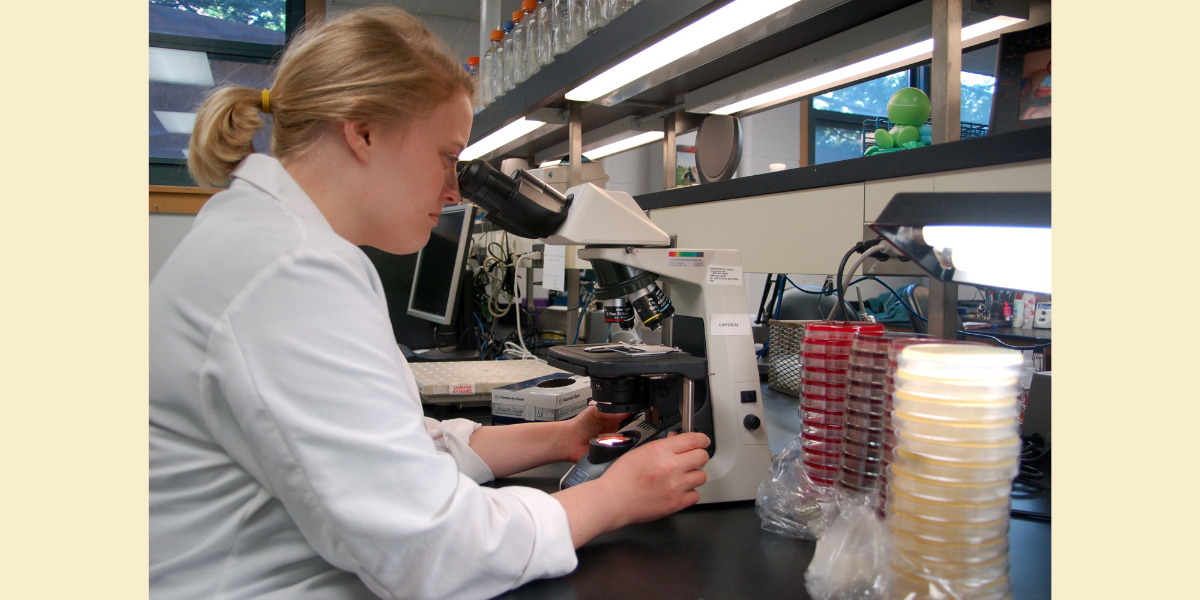Top notch
A perfect score in an external testing exercise reveals the Minnesota Veterinary Diagnostic Laboratory’s proficiency

A perfect score in an external testing exercise reveals the Minnesota Veterinary Diagnostic Laboratory’s proficiency
The Veterinary Diagnostic Laboratory at the College of Veterinary Medicine takes top honors in a specimen testing competition.
A perfect score on a recent test administered by the Minnesota Department of Health (MDH) shows why the Minnesota Veterinary Diagnostic Laboratory (VDL) is a trusted resource for disease surveillance. The results also illustrate the importance of regular testing to help laboratory staff learn and maintain their skills.
Each year the MDH provides a “challenge set” of four unknown organisms with case histories. The dried substances may include attenuated strains of bioterrorism agents or other organisms of public health significance. Participating labs are asked to identify the organism and the next steps it would take, which are dependent on whether it is considered a reportable disease or a contagious “select agent,” both of which require notifications to appropriate health authorities. Forty-four labs participated in the most recent MDH challenge, and the VDL was the only veterinary lab in Minnesota to participate.
“Laboratories like ours are sentinels, always looking for organisms that can threaten public health,” says Karen Olsen, manager of the VDL’s Bacteriology section. “It is critically important that sentinel labs understand the testing algorithms and choose testing and referral options correctly.”
The challenge set also gave the VDL an opportunity to test its automation equipment.
“Automated identification systems help us handle the large volumes of samples we receive, but these tools aren't always reliable in identifying some organisms,” Olsen says. “That’s why we humans are so critical to the process, and why continual testing is important.”
VDL teams participate in more 40 external testing programs to learn and strengthen their skills. The testing helps the lab maintain its accreditation and status as a Tier One laboratory in the National Animal Health Laboratory Network. The laboratory recently passed a challenge test focused on detecting Scrapie, a fatal, degenerative disease affecting the central nervous system of sheep and goats.
“Minnesotans depend on fast, accurate test results,” says Carrie Wees, VDL operations and quality manager. “Our dedication to ongoing external proficiency testing and connections to the national laboratory network ensure that our customers can depend on our results.”
The VDL is the state’s official, full-service laboratory for animal health diagnostics. The 100+ employees are focused on rapidly diagnosing animal diseases, identifying emerging diseases, developing new diagnostic methods, and training diagnosticians and veterinarians. Each year it conducts nearly one million tests while looking for a wide variety of diseases—from livestock disease to canine influenza to rabies to wildlife diseases such as chronic wasting disease. It was established at the University of Minnesota in 1904.